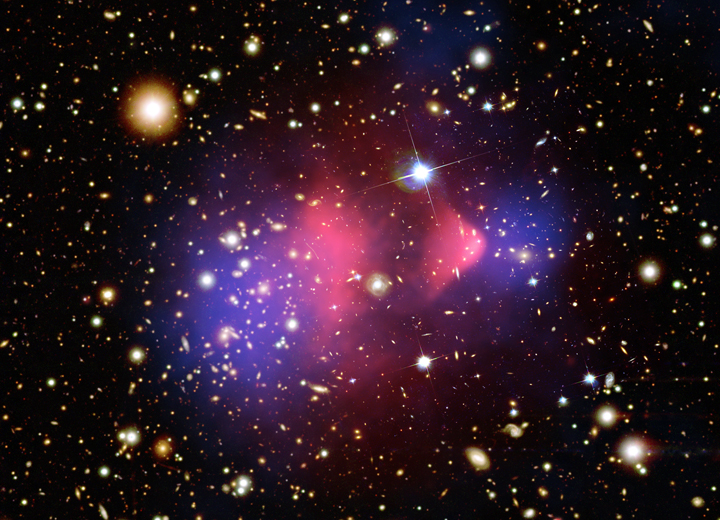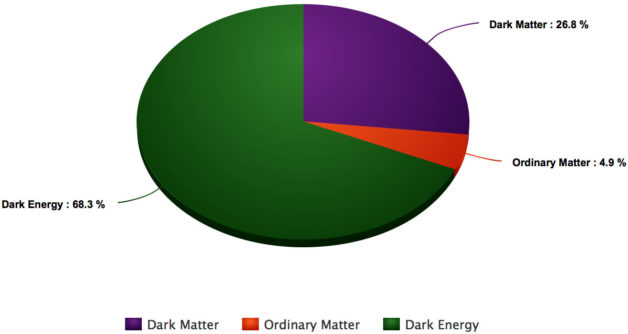What’s known
1. We can observe its effects.
While we can’t see dark matter, we can observe and measure its gravitational effects. Galaxies have been observed to spin much faster than expected based on their visible matter, and galaxies move faster in clusters than expected, too, so scientists can calculate the “missing mass” responsible for this motion.
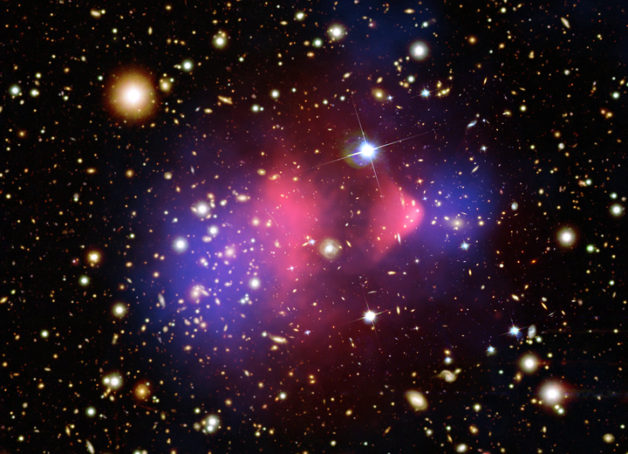
A composite image of the “bullet cluster,” a galaxy cluster formed by a collision of two clusters. The pink clumps show hot gas containing most of the normal matter, while the two blue clumps reveal where most of the mass in the clusters is actually contained. This provides evidence for dark matter since most of the mass was expected to be concentrated around the pink areas. (Credit: X-ray image by NASA/CXC/M.Markevitch et al.; optical image by NASA/STScI, Magellan/U.Arizona/D.Clowe et al.; lensing map image by NASA/STScI, ESO WFI, Magellan/U.Arizona/D.Clowe et al.)
2. It is abundant.
It makes up about 85 percent of the total mass of the universe, and about 27 percent of the universe’s total mass and energy.
3. We know more about what dark matter is not.
Increasingly sensitive detectors are lowering the possible rate at which dark mark matter particles can interact with normal matter.
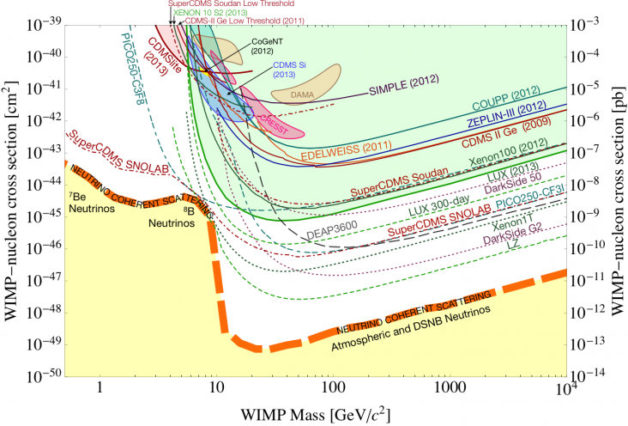
This chart shows the sensitivity limits (solid-line curves) of various experiments searching for signs of theoretical dark matter particles known as WIMPs (weakly interacting massive particles). The shaded closed contours show hints of WIMP signals. The thin dashed and dotted curves show projections for future U.S.-led dark matter direct-detection experiments expected in the next decade, and the thick dashed curve (orange) shows a so-called “neutrino floor” where neutrino-related signals can obscure the direct detection of dark matter particles. (Credit: Snowmass report, 2013.)
What’s unknown
1. Is it made up of one particle or many particles?
Could dark matter be composed of an entire family of particles, such as a theorized “hidden valley” or “dark sector?”
2. Are there “dark forces” acting on dark matter?
Are there forces beyond gravity and other known forces that act on dark matter but not on ordinary matter, and can dark matter interact with itself?
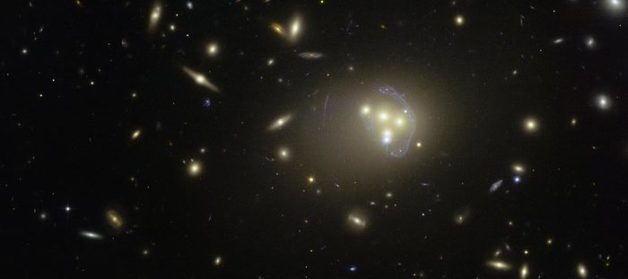
This image from the NASA/ESA Hubble Space Telescope shows the galaxy cluster Abell 3827. The blue structures surrounding the central galaxies are views of a more distant galaxy behind the cluster that has been distorted by an effect known as gravitational lensing. Observations of the central four merging galaxies in this image have provided hints that the dark matter around one of the galaxies is not moving with the galaxy itself, possibly indicating the occurrence of an unknown type of dark matter interaction. (Credit: ESO)
3. Is there dark antimatter?
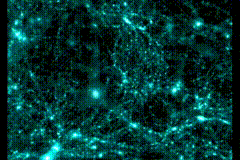
A computerized visualization showing the possible large-scale structure of dark matter in the universe. (Credit: Amit Chourasia and Steve Cutchin/NPACI Visualization Services; Enzo)
Could dark matter have an antimatter counterpart, as does normal matter, and is there a similar imbalance that favored dark matter over “dark antimatter” as with normal matter-antimatter?
View a related article: Hunting for Dark Matter’s Hidden Valley.
###
Lawrence Berkeley National Laboratory addresses the world’s most urgent scientific challenges by advancing sustainable energy, protecting human health, creating new materials, and revealing the origin and fate of the universe. Founded in 1931, Berkeley Lab’s scientific expertise has been recognized with 13 Nobel prizes. The University of California manages Berkeley Lab for the U.S. Department of Energy’s Office of Science. For more, visit www.lbl.gov.
DOE’s Office of Science is the single largest supporter of basic research in the physical sciences in the United States, and is working to address some of the most pressing challenges of our time. For more information, please visit science.energy.gov.
